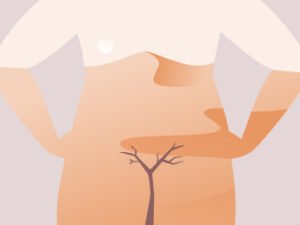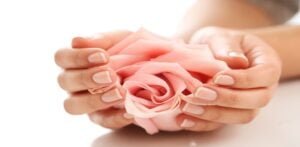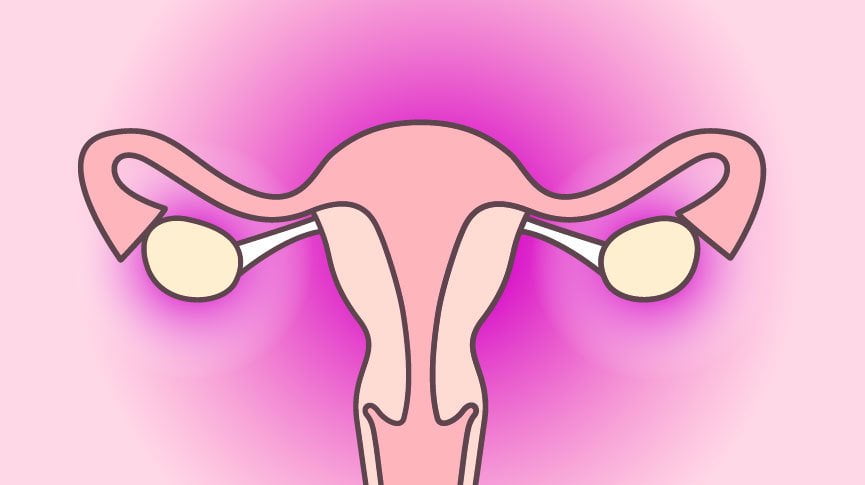Vaginal dryness is a common and often under-discussed issue that can affect women of all ages. It can lead to discomfort, and pain during intercourse, and even impact a woman’s overall quality of life. Fortunately, there are various effective treatments available to address this issue and restore comfort and well-being. In this comprehensive guide, we will explore the causes of vaginal dryness, its symptoms, and most importantly, the diverse treatment options available.
Contents
What is “Vaginal Dryness”?

Vaginal dryness refers to a condition in which the vagina lacks proper moisture and lubrication. This can result in discomfort, pain, and other symptoms. The vagina is normally kept moist by a thin layer of clear fluid produced by the cervix and vaginal walls. This natural lubrication is essential for various functions, including comfortable sexual activity, prevention of irritation, and maintenance of overall vaginal health.
Several factors can contribute to vaginal dryness, and it can occur at any age. Some common causes include:
Hormonal Changes:
- Menopause: A significant decrease in estrogen levels during menopause can lead to thinning of the vaginal lining and reduced lubrication.
- Pregnancy and Breastfeeding: Hormonal fluctuations during pregnancy and breastfeeding can also cause vaginal dryness.
Medications:
Certain medications, such as antihistamines, decongestants, and some antidepressants, may have dryness as a side effect.
Stress and Anxiety:
Psychological factors like stress and anxiety can affect sexual arousal and natural lubrication.
Chemical Irritants:
The use of harsh soaps, douches, or perfumed products in the genital area can disrupt the natural balance of the vagina and contribute to dryness.
Certain Health Conditions:
Conditions like Sjögren’s syndrome and autoimmune disorders can affect the moisture-producing glands in the body, including those in the vaginal area.
Symptoms of vaginal dryness may include:
- Pain or Discomfort: Especially during sexual intercourse, which may lead to a decreased interest in sexual activity.
- Itching or Burning Sensation: Resulting from increased vulnerability to irritation.
- Urinary Symptoms: Such as increased frequency or urgency.
When Do I Need Vaginal Dryness Treatment?
Vaginal dryness is a common condition, and occasional dryness may not necessarily require treatment. However, if you experience persistent or severe symptoms, it’s advisable to seek medical attention. Here are some signs and situations that may indicate the need for vaginal dryness treatment:
- Persistent Discomfort: If you consistently experience symptoms such as itching, burning, soreness, or a feeling of dryness in the vaginal area, it’s essential to address these discomforts.
- Pain During Intercourse: Pain or discomfort during sexual intercourse is a common symptom of vaginal dryness. If this issue persists, it can negatively impact your sexual health and overall well-being.
- Changes in Sexual Desire: Vaginal dryness can sometimes lead to a decrease in sexual desire or arousal due to the discomfort associated with intimacy.
- Bleeding During or After Sex: Dryness can cause friction during sexual activity, leading to small tears in the vaginal tissues and subsequent bleeding. If you notice this, it’s crucial to discuss it with a healthcare professional.
- Menopausal Symptoms: For women going through menopause, hormonal changes often lead to vaginal dryness. If you are experiencing other menopausal symptoms along with vaginal dryness, such as hot flashes or mood changes, it may be an indication to explore treatment options.
- Postpartum Dryness: After childbirth, hormonal changes and breastfeeding can contribute to vaginal dryness. If this condition persists or causes discomfort, consult with a healthcare provider.
Vaginal Dryness Treatment Methods

Over-the-counter (OTC) Moisturizers and Lubricants
Vaginal dryness is a common condition that can be caused by various factors, such as hormonal changes, medications, childbirth, breastfeeding, and menopause. Over-the-counter (OTC) moisturizers and lubricants are commonly used to alleviate symptoms associated with vaginal dryness. Here’s an overview of how they work and considerations for their use:
1. OTC Vaginal Moisturizers:
How they work:
- Long-term relief: Vaginal moisturizers are designed to provide long-lasting relief by hydrating and moisturizing the vaginal tissues.
- Regular application: Typically applied on a regular schedule, such as every few days, to maintain vaginal moisture.
Common ingredients:
- Water-based or silicone-based: Water-based moisturizers mimic the body’s natural lubrication. Silicone-based moisturizers provide longer-lasting moisture.
- Hyaluronic acid: A common ingredient that helps retain water, promoting hydration.
Application:
- Applied internally to the vaginal walls using an applicator or externally as a cream or gel.
Examples of OTC Vaginal Moisturizers:
- Replens
- K-Y Liquibeads
- Hyalo Gyn
2. OTC Vaginal Lubricants:
How they work:
- Immediate relief: Vaginal lubricants provide instant relief by reducing friction during sexual activity.
- Short-term use: Typically used just before sexual activity.
Common ingredients:
- Water-based, silicone-based, oil-based: Each type has its characteristics. Water-based is safe for most condoms, silicone-based lasts longer, and oil-based is not recommended for use with latex condoms.
Application:
- Applied directly to the genital area, on the penis, or a sex toy.
Examples of OTC Vaginal Lubricants:
- Astroglide
- K-Y Jelly
- Sliquid
Surgery
Vaginal dryness is often associated with hormonal changes, such as those that occur during menopause, and it is typically managed through non-surgical approaches.
Common non-surgical treatments for vaginal dryness include:
- Hormone Replacement Therapy (HRT): Systemic or local estrogen therapy is a common approach for managing vaginal dryness in postmenopausal women. Estrogen can be administered in the form of creams, tablets, or rings.
- Over-the-Counter (OTC) Moisturizers and Lubricants: As mentioned earlier, OTC products like moisturizers and lubricants are often the first line of defense for managing vaginal dryness. They provide hydration and lubrication to alleviate discomfort.
- Lifestyle Changes: Staying well-hydrated, avoiding irritants, and incorporating a balanced diet may contribute to overall vaginal health.
It’s essential to consult with a healthcare professional, typically a gynecologist, to discuss symptoms, explore potential causes, and determine the most appropriate course of treatment. They can guide whether hormonal therapy or other non-surgical options are suitable for your specific situation.
Natural Modifications and Treatments

If you’re experiencing vaginal dryness and prefer natural or lifestyle modifications, there are several approaches you can consider. It’s important to note that these strategies may vary in effectiveness from person to person, and consulting with a healthcare professional is recommended for personalized advice. Here are some natural modifications and treatments for vaginal dryness:
1. Hydration:
- Staying well-hydrated is essential for overall health, including vaginal health. Drinking an adequate amount of water can contribute to moisture levels in the body.
2. Dietary Choices:
- Omega-3 Fatty Acids: Foods rich in omega-3 fatty acids, such as fatty fish (salmon, mackerel), flaxseeds, and chia seeds, may help support skin and mucous membrane health.
3. Phytoestrogens:
- Some plant-based foods contain compounds called phytoestrogens that may have mild estrogenic effects. These include soy products, flaxseeds, and red clover.
4. Topical Coconut Oil:
- Coconut oil is a natural moisturizer that can be applied topically to the external genital area. However, avoid using oil-based lubricants internally if you use latex condoms, as they can weaken the latex.
5. Aloe Vera Gel:
- Aloe vera gel, known for its soothing properties, can be applied externally to alleviate irritation.
6. Avoid Irritants:
- Scented Products: Avoid using scented soaps, bubble baths, or feminine hygiene products that may contain harsh chemicals and contribute to irritation.
7. Regular Sexual Activity:
- Engaging in regular sexual activity, if comfortable, can help promote natural lubrication and maintain vaginal health. However, communicate openly with your partner and go at your own pace.
8. Kegel Exercises:
- Kegel exercises can help improve pelvic floor muscle tone, potentially enhancing blood flow to the genital area and supporting vaginal health.
9. Cotton Underwear:
- Choose breathable, cotton underwear to reduce moisture buildup and allow air circulation.
10. Humidifier:
- In dry climates or during the winter months, using a humidifier in your bedroom can help maintain moisture levels.
11. Vitamin E:
- Some women find relief by using vitamin E oil or creams topically. Discuss this with your healthcare provider before trying.
12. Flaxseed:
- Adding ground flaxseed to your diet may provide omega-3 fatty acids and lignans, which can have potential health benefits.
Education and Support

Education and support are crucial aspects of addressing health concerns, including issues related to sexual health and well-being. When it comes to topics like vaginal dryness, seeking information, guidance, and emotional support can significantly contribute to a person’s overall well-being. Here are some key aspects of education and support in this context:
1. Healthcare Provider Guidance:
- Consultation: Schedule an appointment with a healthcare provider, such as a gynecologist or a women’s health specialist, to discuss symptoms, concerns, and potential treatment options.
- Education: Seek information about the causes of vaginal dryness, available treatments, and preventive measures. A healthcare provider can provide accurate and personalized guidance.
2. Sexual Health Education:
- Sexual Wellness Education: Learn about sexual health and wellness, including the normal changes that may occur at different stages of life. Understanding one’s body and sexual response is essential.
3. Online Resources:
- Reputable Websites: Access information from reputable online sources, such as medical associations, health organizations, and reputable healthcare websites like Hermantra.
- Forums and Communities: Participate in online forums or communities where individuals share their experiences. However, exercise caution and verify information from credible sources.
Conclusion
Vaginal dryness is a common concern that can significantly impact a woman’s physical and emotional well-being. Fortunately, there are numerous treatment options available, ranging from over-the-counter solutions to prescription medications and innovative medical procedures. By understanding the causes, symptoms, and various treatment modalities, women can make informed decisions about managing and alleviating vaginal dryness.
Seeking professional medical advice is crucial to tailor an effective treatment plan that addresses individual needs and concerns. Remember, prioritizing vaginal health contributes not only to physical comfort but also to a woman’s overall sense of empowerment and vitality.
If you are facing menopause related issues, menopause treatment at HerMantra can help. Book your free trial online menopause treatment session now.


